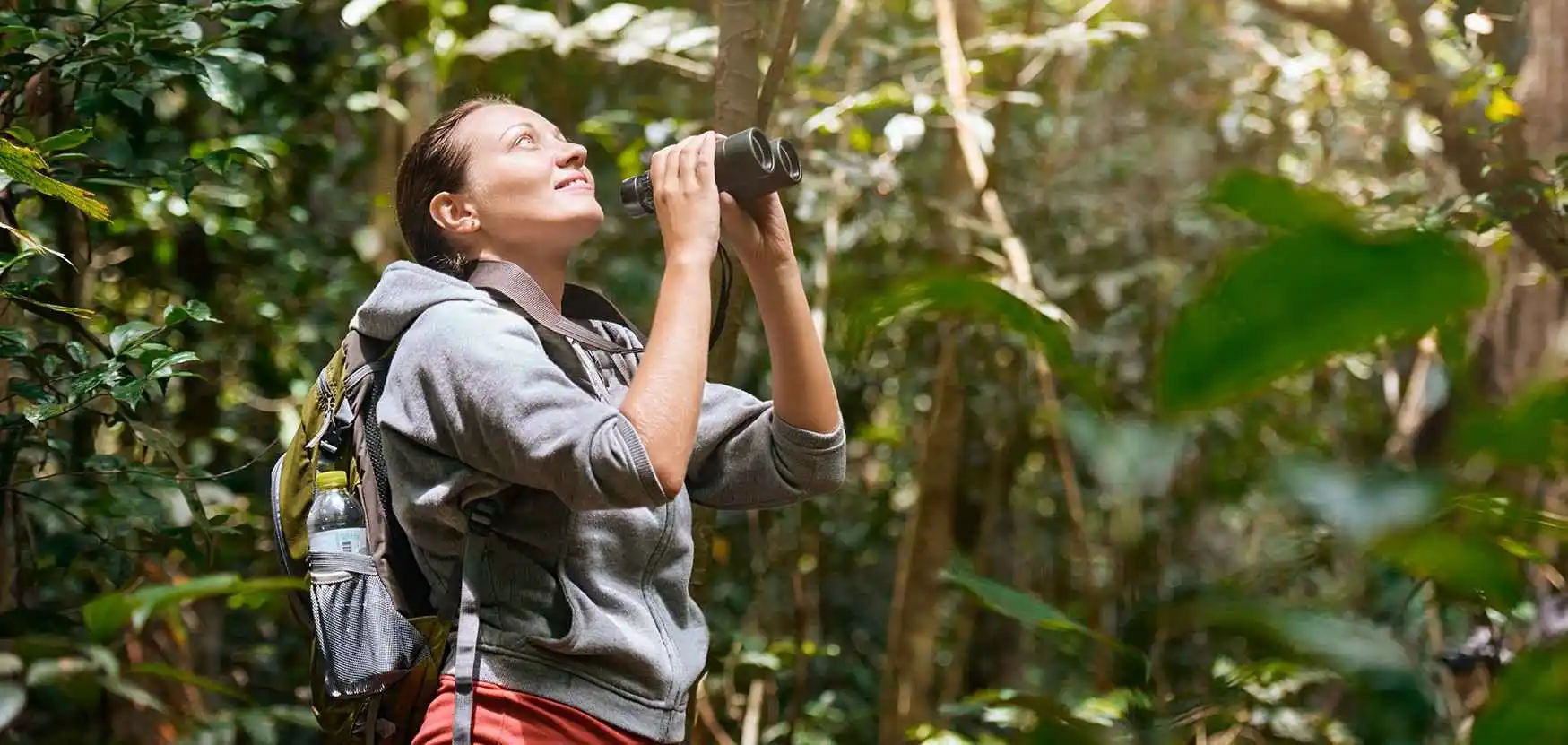Amazon Photography Tips
 For Nature Enthusiasts and Adventure Seekers, Amazon Photography Tips are essential for anyone visiting Peru’s Manu National Park or exploring the broader Amazon rainforest Peru.
For Nature Enthusiasts and Adventure Seekers, Amazon Photography Tips are essential for anyone visiting Peru’s Manu National Park or exploring the broader Amazon rainforest Peru.
This unique ecosystem, with its dense canopy, winding rivers, and diverse wildlife, offers endless photographic opportunities. However, the rainforest presents challenges such as low light under the canopy, high humidity, and elusive animals.
Understanding the right techniques and planning your visit carefully can make all the difference in capturing stunning images.
Equipment and Gear for Photographing in the Amazon
To capture the beauty of the Amazon, the first step is choosing the right equipment. For wildlife that inhabits the treetops, such as colorful birds or monkeys, a telephoto lens (200–400mm) is ideal.
For close-ups of butterflies, insects, and exotic plants, a macro lens allows you to capture intricate details. Wide-angle lenses are perfect for landscapes, river views, and panoramic jungle scenes.
Protecting your gear is equally important. A weather-resistant camera, waterproof bags, and silica gel packs protect your equipment from sudden rain and high humidity.
A lightweight tripod helps stabilize shots in low-light conditions, especially during sunrise and sunset. A subtle but important tip: keep insect repellent away from your camera to avoid damage.
Harnessing Light and Timing
 The Amazon’s vegetation creates variable lighting conditions, which can be both a challenge and an advantage. The best time to photograph is very early in the morning and late in the afternoon—when soft, diffused light highlights the textures and colors of the jungle.
The Amazon’s vegetation creates variable lighting conditions, which can be both a challenge and an advantage. The best time to photograph is very early in the morning and late in the afternoon—when soft, diffused light highlights the textures and colors of the jungle.
Cloudy or misty days are also ideal, as they provide even lighting and reduce harsh shadows. Looking for clearings or trails helps capture wildlife and landscapes with natural light, avoiding overexposed or dark areas.
Adjusting exposure according to the environment ensures images retain detail and depth, whether it’s a vibrant orchid, a perched toucan, or a panoramic river view.
Composition That Tells a Story
A strong composition transforms ordinary photos into memorable ones. Some useful techniques include:
- Natural lines: rivers, roots, or vines that guide the viewer’s eye.
- Focus on a single subject: highlight details of a flower, insect, or capybara.
- Cultural context: respectfully include local communities to add narrative and authenticity.
When combined with patience and observation, these techniques help convey the richness and diversity of the Amazon in a genuine way.
Capturing Flora and Fauna in Manu National Park
 Manu National Park is home to more than 1,800 bird species, capybaras, jaguars, caimans, monkeys, and thousands of plant species. Waiting for the perfect moment allows photographers to capture natural behaviors.
Manu National Park is home to more than 1,800 bird species, capybaras, jaguars, caimans, monkeys, and thousands of plant species. Waiting for the perfect moment allows photographers to capture natural behaviors.
For fast-moving animals, use a higher shutter speed, while macro photography highlights the textures and patterns of butterfly wings, orchids, or unique leaves.
Seek open areas or trails to photograph canopy-dwelling animals without obstruction. Using natural light and avoiding disturbance to wildlife ensures authentic and aesthetically pleasing results.
Preparing for the Amazon Climate
Humidity, heat, and sudden rain are constant in the rainforest. Consider the following:
- Lightweight, breathable clothing for comfort.
- Protection for your camera and lenses against rain.
- Airtight cases with silica gel to prevent fogging.
- Gradual camera adjustment when moving from air-conditioned areas to humid environments.
Proper preparation allows you to focus on photography without worrying about your gear.
Planning a Photography Tour
Hiring an experienced guide greatly enhances your experience. Local experts know the best locations and times to spot wildlife, help navigate challenging terrain, and ensure sustainable, safe practices.
Specialized tours, such as photography expeditions in Manu National Park or Peru Amazon Jungle Tours, offer access to hidden viewpoints, panoramic rivers, and unique wildlife encounters—guaranteeing exclusive and professional images.
Best Time to Photograph the Amazon
The dry season (May to September) is the most favorable period for photography:
- Trails are easier to access.
- River levels are lower.
- Fewer insects.
- Optimal morning and evening light for wildlife and landscape shots.
Visiting during these months provides comfortable conditions and superior photographic results.
Frequently Asked Questions (FAQs)
📩 Get in Touch Now | 🌐 Visit Our Website


